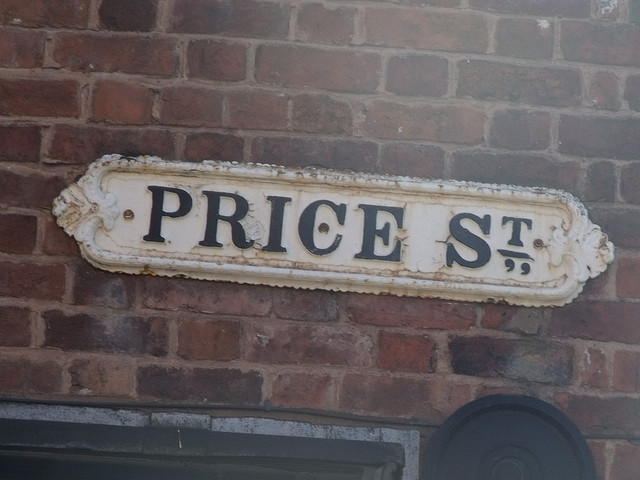Maximise Tax Returns for Property Tax with these tips
updated 15th October 2016
Organise your earnings and expenses
In order to effectively manage finances and investments, most property investors use some sort of record-keeping system, as keeping track of earnings and expenses allows investors to manage their budget and assists in streamlining the process of filing a tax return at end of financial year.
The ATO has recently upgraded its personal tax record keeper (PTRK), which is a free software program that is ideal for property investors. The program records income, expenses and asset details throughout the financial year, and allows the user to store information including salary and wages, interest and dividends, distributions from managed funds, rental income and expenses, and even medical expenses and work-related costs.
It can be updated as often as required, so expenses can be input as they occur. Then at end of financial year, the program produces a printed summary of the information entered, which can be used when preparing a tax return.
Best of all, the software also ‘speaks’ to the ATO’s e-tax software, so all of the information entered throughout the year can be exported directly into the tax return software to lodge with the Tax Office.
The software is free and available to download at www.ato.gov.au
If you fly to inspect your rental property, stay overnight, and return home on the following day, all of the airfare and accommodation expenses would generally be allowed as a deduction
1. Maximise your tax return
The beginning of the new financial year is the ideal time to evaluate the tax effectiveness of your investment properties. As you prepare for the year ahead, consider these top tips to ensure you make the most out of your investment.
Many investors don’t take advantage of the huge tax deductions available through preparing a comprehensive Tax Depreciation Schedule.A depreciation schedule is a report, prepared by a quantity surveyor that outlines the depreciation allowances that a property investor is entitled to over a number of years. These allowances can amount to tens or even hundreds of thousands of dollars worth of deductions per property.
Depreciation varies dramatically, based on the purchase price, age and type of property, and while new or renovated properties generally attract the largest deductions, more mature properties can still be worth a few thousand dollars in tax breaks.
“There’s two types of older properties in reality; those that are built before 1985, and those built after 1985,” explains Tyron Hyde, director of depreciation specialists Washington Brown. “Those built pre-1985 will only have plant and equipment deductions, which include things such as an oven, carpet and blinds. However, with properties built after 1985 you get the building allowance, and plant and equipment. You then start to include structural things like roofing and retaining walls.”
2. Travel more often
According to the ATO, if you travel to inspect or maintain your property, or collect rent, you may be able to claim the costs of travelling as a deduction.
You are allowed a full deduction where the sole purpose of the trip relates to the rental property. For example, if you fly to inspect your rental property, stay overnight, and return home on the following day, all of the airfare and accommodation expenses would generally be allowed as a deduction. However, if you combine the trip with a holiday or other private activities, you may need to apportion the expenses.
You can also claim expenses such as car travel and taxi fares to inspect or carry our repairs on the property. Consult your accountant or the ATO for further details.
3. Evaluate the rent
In the current rental climate, where vacancies are increasingly low and interest rates continue to rise, it is important that landlords reassess the rent regularly. “While you should raise the rents to what the market will bear, it’s important not to raise them too much so that the tenant moves out,” warns Pamela Yardney, associate director of Metropole Property Management.
To set an accurate rent, you should monitor the rental return that your property, and similar properties in the area, are achieving – and ensure your property sits somewhere in the middle.
It is important to consider the reaction of long-term tenants when assessing the rent. Raising the rent by $10 just to meet market expectations might drive your existing tenant to move out. Also, the NSW Office of Fair Trading Rental Guide states that you must give tenants at least 60 days’ written notice of a rental increase.
4. Add up incidentals
Stationery, postage, fax and phone charges relating to your investment property are all tax deductible, so record your spending on such items. This includes costs involved in communicating with your tenants, property manager and even your property lawyer.
5. Re-consider repairs
Be strategic about spending money on certain repairs on your investment property, as some are classed as ‘improvements’ rather than repairs. Improvements cannot be claimed as a deduction.
According to the Tax Office, a repair is usually occasional and partial. Typically, a repair aims to replace a part of something, or restore something to its original working order. While a repair simply restores something to its original state, an improvement makes something better than it was originally.
If the kitchen in your investment property includes one broken cupboard, for example, replacing that single cupboard would be a repair. However, replacing all of the cupboards would be an improvement.
The above information is designed as a guideline only. Seek advice from your accountant or the Australian Tax Office regarding your individual situation.
This article has been republished with permission from Your Investment Property magazine. Try our Loan Repayment Calculator and find the best repayment strategy for you.



